JEM/SMILES on JEM Exposed facility
SMILES worked for 6 months on the International Spaces Station - with zone-destroying stratospheric BrO as a trace gas target. The 640 GHz SMILES
radiometer - which, from its platform on the International Space Station, monitored global distributions of the stratospheric trace gases. It was launched from
Japan on an H-IIB Rocket on the 11 September 2009. Sitting inside JAXA's HTV transfer vehicle, it arrived and docked at the ISS on the 18th September and
was transfered to the JEM exposed facility.
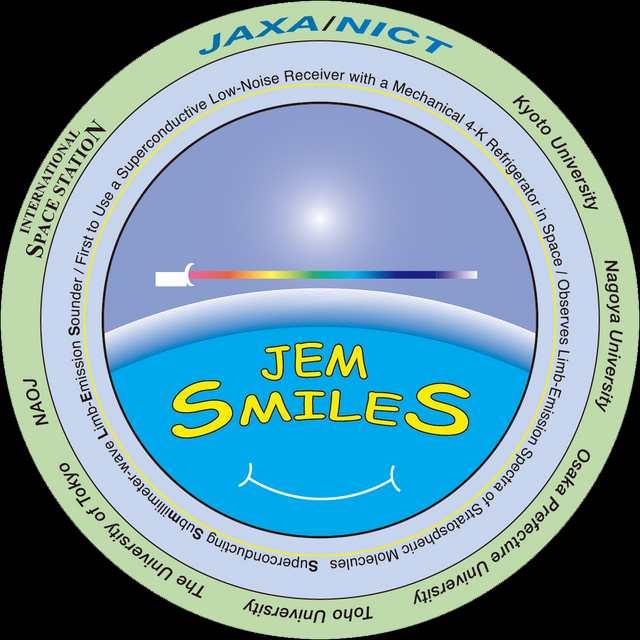
First Light was achieved on the 10 October 2009 - with our colleague Satoshi Ochiai-san of the National Institute of Information and Communications
Technology, NICT in Japan commenting
SMILES has started observations of Earth's atmosphere.
Attached is beautiful spectra (on a dirty paper) observed by SMILES. Each line is an integration for only 0.5 s. We now get around 1600 limb spectra
sets every day like attached plot.
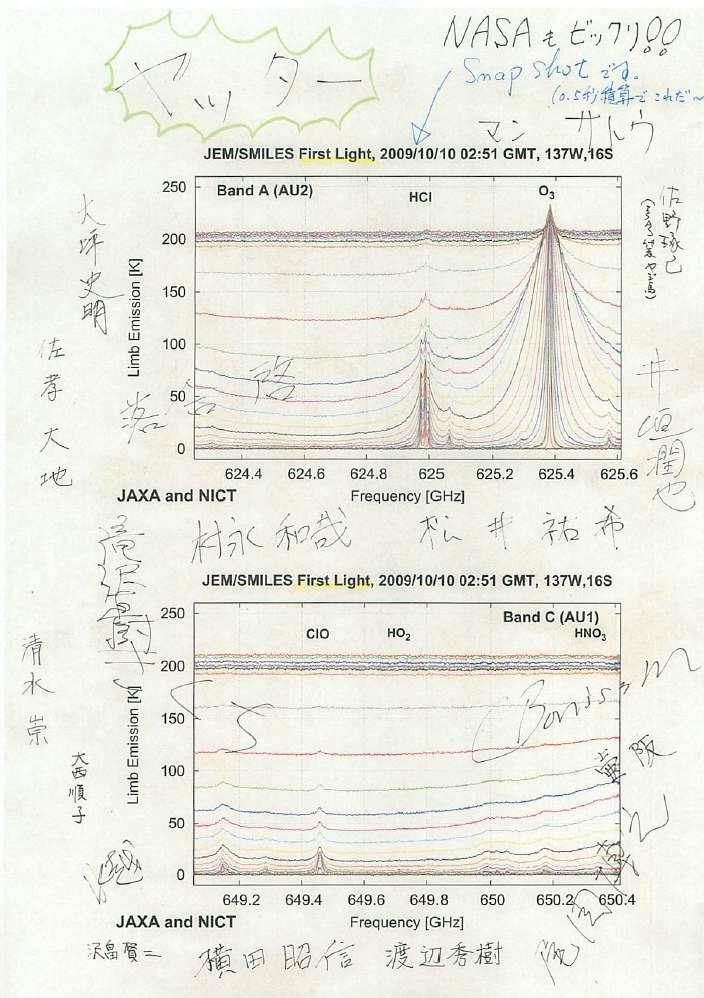
More detailed results can be found on a set of conference viewgraphs by Makoto Suzuki-san et al from the 5th Lombsounding conference held in Helsinki in
November 2009
TK designed and manufactured the Ambient Temperature Optics (AOPT) which provided Single Sideband filtering, LO injection (with the source
supplied by Radiometer Physics in Germany) and primary beamforming for the mainantenna though the use of a Back-to-Back (BBM) corrugated horn.
Much of the testing was performed by Axel Murk in the IAP in Bern
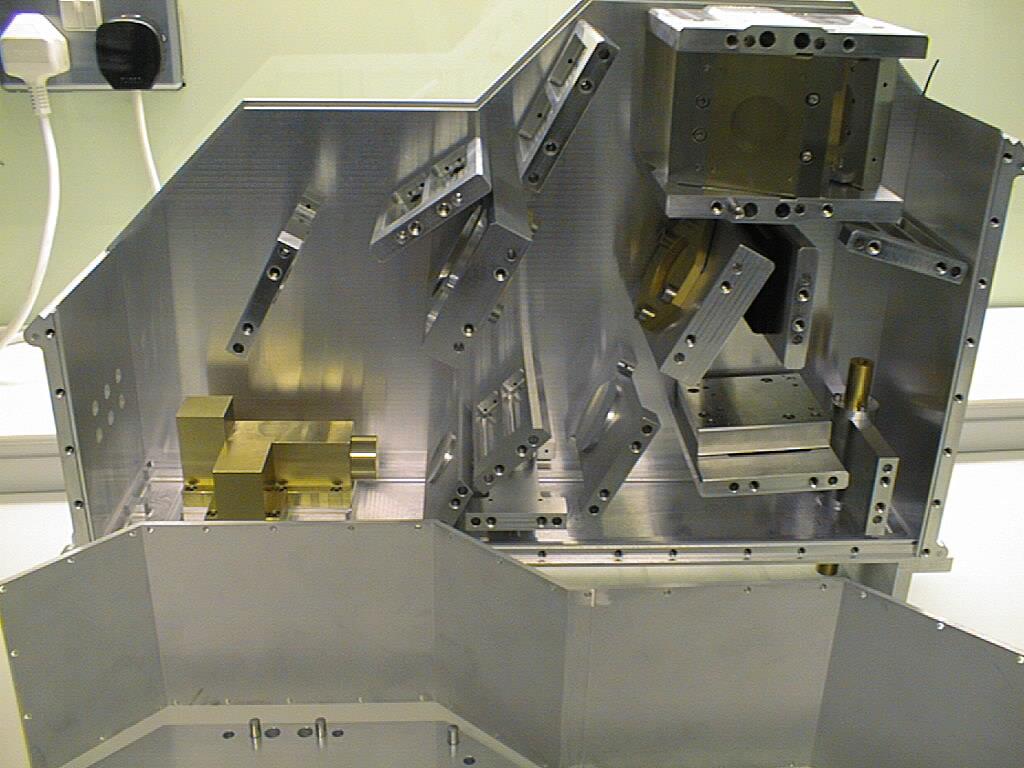
Image of the AOPT. At the top is the Inatani variant of a Martin-Puplett Interferometer, providing the SSB rejection (Upper sideband are placed in one
polarization and lower sideband in the other). At the bottom right can just be seen the internal part of the overmoded Back-to-Back Horn, which defines
the beam on the sky, via the antenna optics. All of the Optics was positionedby direct machining - now adjustment were required.
TK also provide corrugated horns to define the beams within the Receiver and couple power to the 4k Sumitomo cooled SIS mixers.

The SMILES scanning dish is shown above, and the two images below are of the whole SMILES instrument.
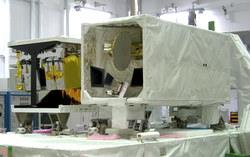
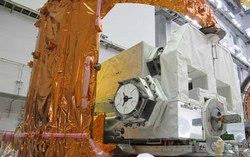
NASA has kindly provide two images - of the HTV arriving at the ISS
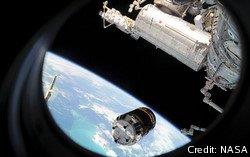
And SMILES being transfered to the JEM exposed facility using two robot arms
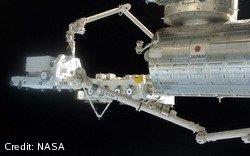
There is evidence that the Frequency Selectrive Surfaces, based upon natani-variants of a Martin_Puplett Interferometer have survived the launch:
Ochiai-san kindly supplied us with this plot of the change in the AOS output from the two mixers between pre and post launch measurements. He
comments thus:
Attached is a comparison between in-orbit and the ground-test. Because the temperature of the SLO is lower than that at the ground test, the
curves are shifted to the left, but the relation between SMX-R and SMX-T is not changed. (The peaks are closer in vacuum than in the air. The result
is consistent.) So we think that the FSP's spacing was not changed during launch.
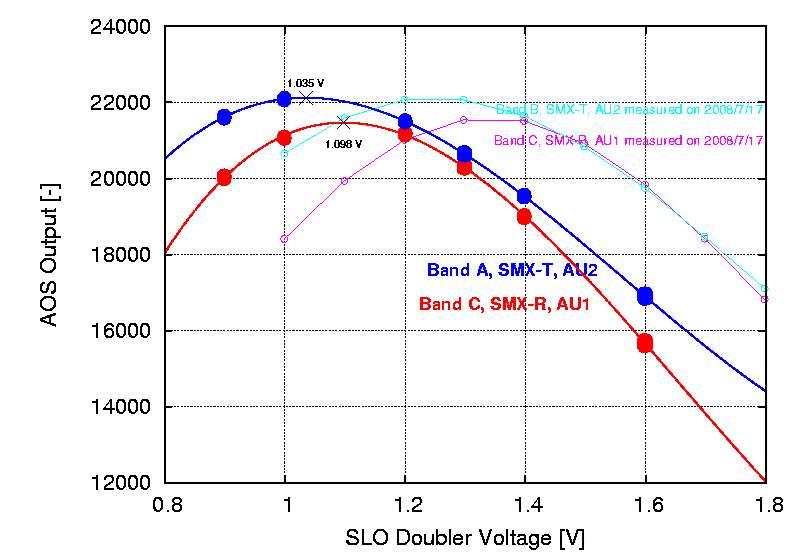
and also commented thus on the performance of the SSB filter after the First Light measurements arrived:
The function of the FSP can be confirmed in the attached plot, 649.259 GHz is a image frequency of ozone line at 625.381 GHz
(Doppler shifted by 10 MHz from 625.371 GHz) against LO frequency of 637.32 GHz. You cannot find any trace of leakage around this
frequency from image band. (649.275 GHz + 10 MHz is other line by ozone isotope.)
SMILES stands for Superconducting Submillimeter-Wave Limb-Emission Sounder
